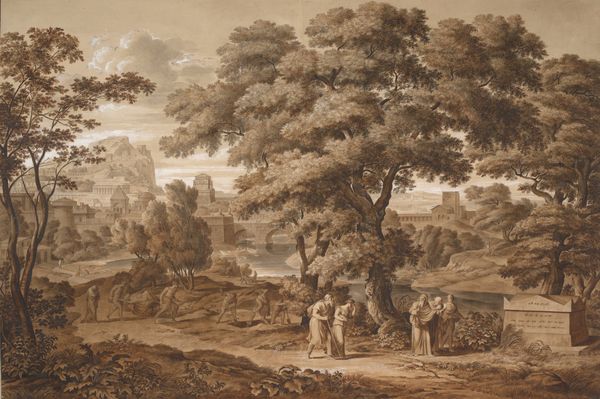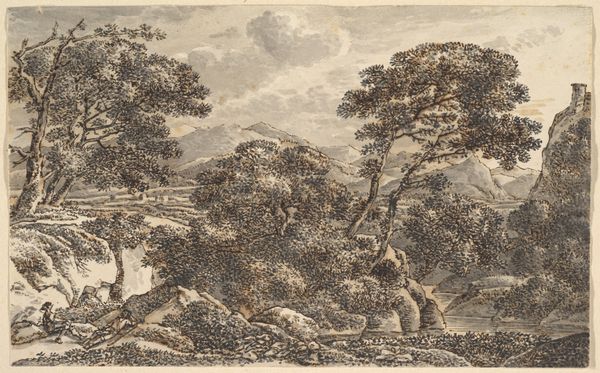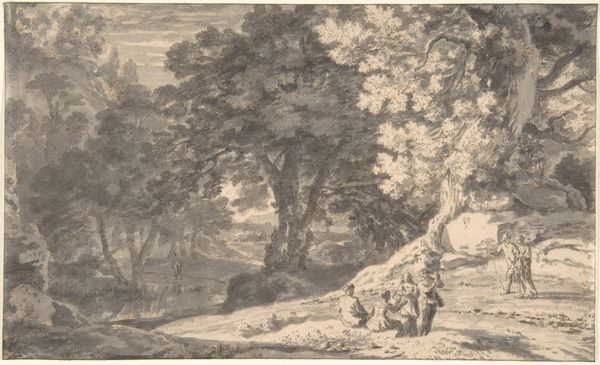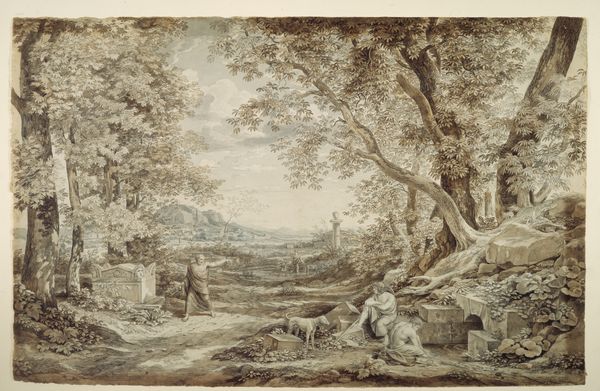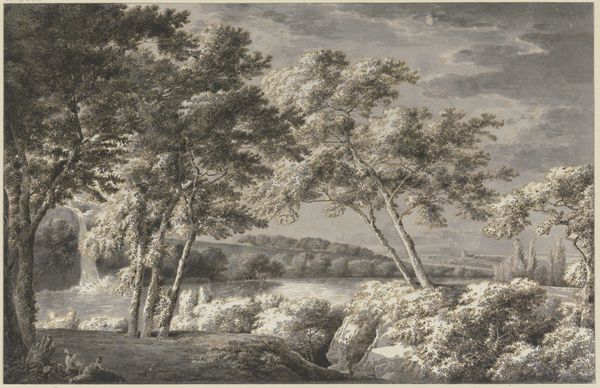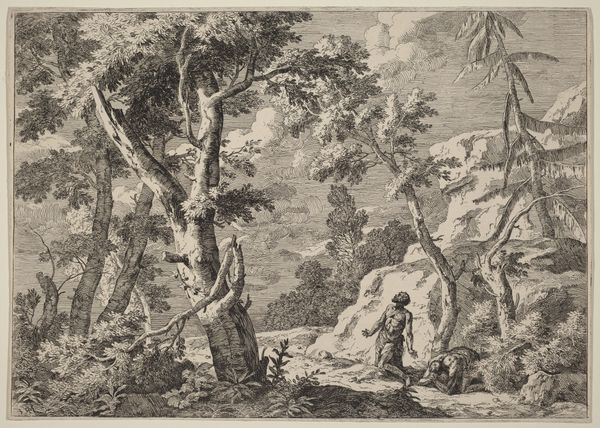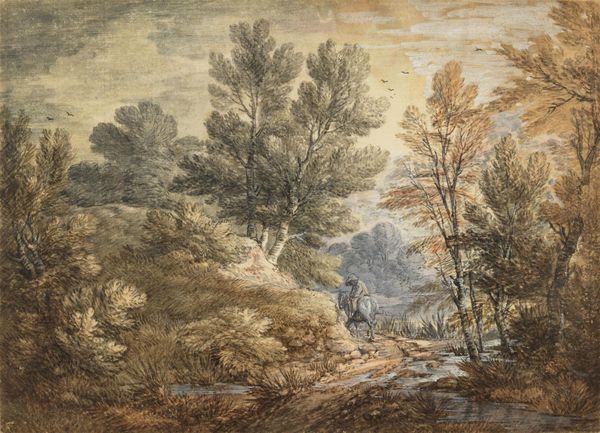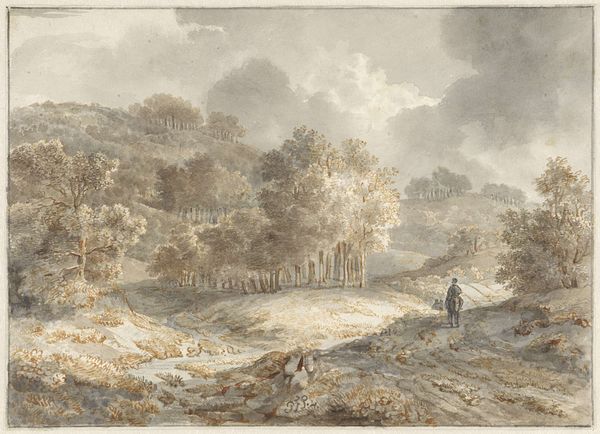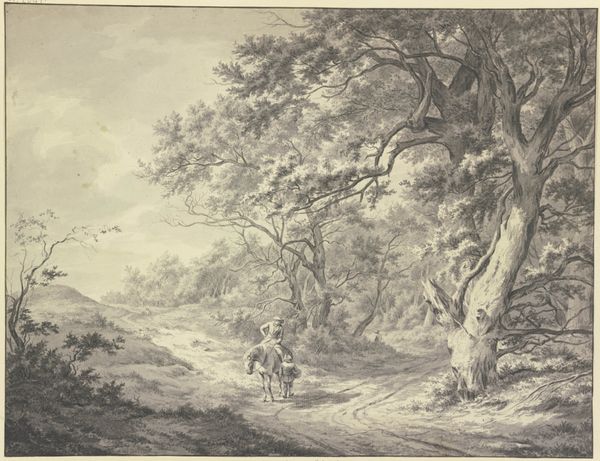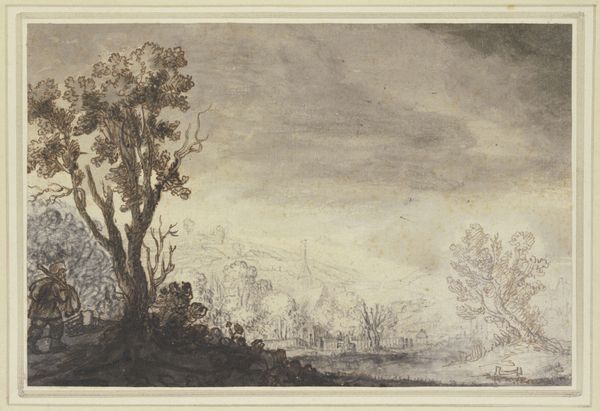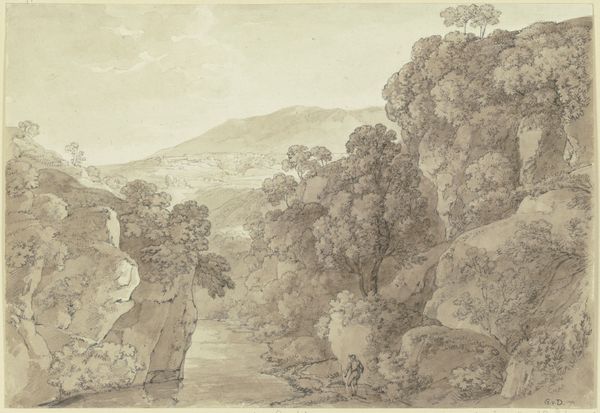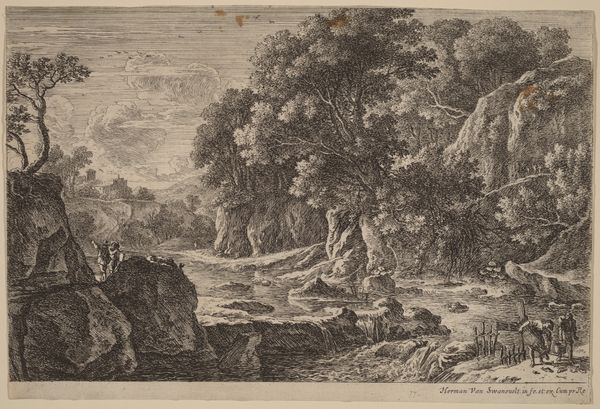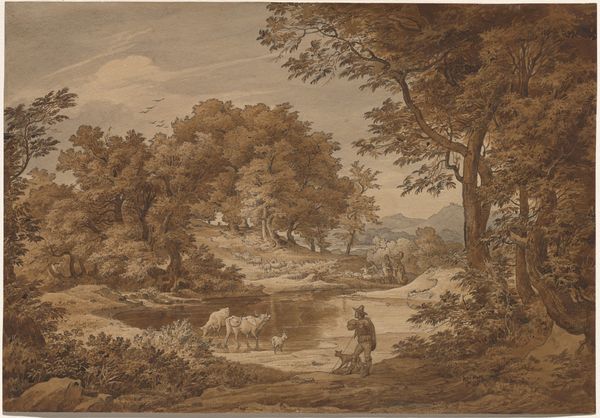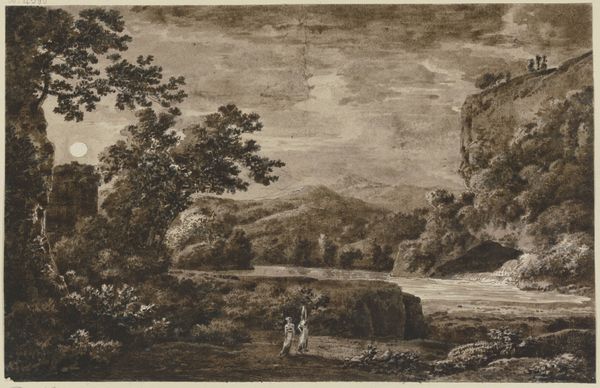
Aussicht nach dem Meer, Niseda und Ischia von der Höhe auf dem Wege nach dem Camaldulenser Kloster auf Cap Miseno bei Neapel 1818
0:00
0:00
drawing, paper, chalk, charcoal
#
drawing
#
neoclacissism
#
landscape
#
figuration
#
paper
#
romanticism
#
chalk
#
charcoal
#
charcoal
#
realism
Copyright: Public Domain
Curator: What strikes me immediately is the serene and vast landscape, rendered in subtle gradations of gray. Editor: Indeed. This is "Aussicht nach dem Meer, Niseda und Ischia von der Höhe auf dem Wege nach dem Camaldulenser Kloster auf Cap Miseno bei Neapel," or "View towards the sea, Niseda and Ischia from the height on the way to the Camaldolese monastery at Cap Miseno near Naples" by Christoph Heinrich Kniep, dating back to 1818. It’s currently held at the Städel Museum. Curator: Kniep masterfully uses chalk and charcoal on paper. Look at how the eye is led from the detailed foreground—those figures nestled amongst the rocks and foliage—toward the distant, almost ethereal sea. There's a delicate balance between representation and idealized landscape. Editor: And consider the cultural context! Kniep's rendering aligns with the burgeoning interest in the picturesque and the Grand Tour. These scenes provided visual confirmation and spurred imaginative reconstructions of classical antiquity. He presents the landscape almost as a stage for experiencing history. Curator: From a purely formal perspective, note how Kniep creates depth through careful modulation of light and shadow. The darkest areas anchor the foreground while progressively lighter tones pull us towards the distant horizon. It's a remarkable use of monochrome to suggest atmospheric perspective. Editor: Exactly! The way the figures are positioned, not dominating the scene, but integrated into it. It speaks to Romanticism's emphasis on the sublime power of nature, and humanity's place within it. The scale underscores how political and philosophical views of this period changed conceptions of history. Curator: Do you find a subtle commentary on the political upheavals of the Napoleonic era too? Maybe. To be so embedded into nature must provide perspective for understanding this political moment, both for Kniep and the work's aristocratic patrons. Editor: I hadn’t considered that perspective, but you might be right. Either way, the interplay of light, form, and context definitely enriches the work. Curator: I concur, examining Kniep's manipulation of tonal values alongside its historic roots heightens the emotional and intellectual dimensions of the artwork.
Comments
No comments
Be the first to comment and join the conversation on the ultimate creative platform.
